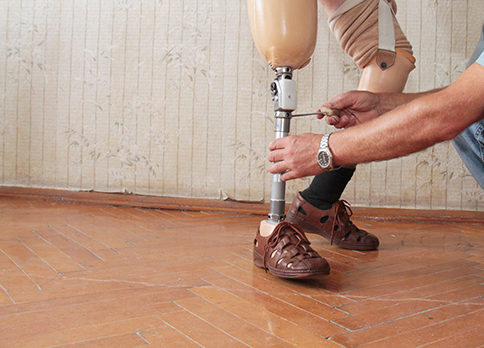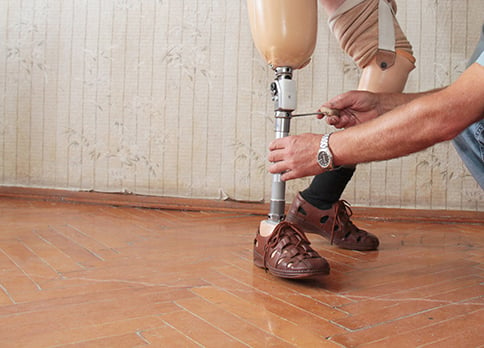After you’ve lost a leg, it’s normal to want to be fitted for a prosthesis and learn how to walk on it as soon as possible. But it’s important to remember that learning to walk with a prosthesis is a brand new skill you’re going to acquire, which means it’ll take a little time! It may be several months before you gain the strength and coordination you’ll need to use your prosthesis on a daily basis.
Keep reading to learn what is involved in this process and what you should expect from yourself, your new leg, and the entire experience.
Fit Is Key
As you’re being fitted for your new leg, remember that this is one of the most -- if not the most -- important part of the process! A comfortable, secure fit between your residual limb and the socket of your prosthesis is essential for successful daily use.
Proper maintenance also affects the way your prosthesis fits. Clean the socket regularly so your skin won’t get irritated, and be sure to take the weather into account as you venture outside.
Bearing Weight
After your prosthesis has been expertly fitted to your residual limb, you’ll be ready to start transferring some weight onto it. This is a crucial part of learning how to walk again. For many people, this is the hardest part of the whole experience because they’re not confident enough to put all their weight on the prosthesis as they walk.
One way to gain confidence is by using parallel bars and supporting your bodyweight with your arms. Soon, you’ll be able to use only one arm to support your weight, and you’ll begin to put more and more weight on your prosthesis as time goes by. If your leg was lost above the knee, you’ll have the additional challenge of learning to walk with an artificial knee joint -- but the process is essentially the same. You’ll bear more weight on your prosthesis each day until finally, you’re walking all by yourself!
Walking Successfully
Once you’ve begun walking on your own, make sure you continue to use any aids recommended by your doctor or therapist. The last thing you want to do is take it too fast and end up hurting yourself!
As you’re walking in everyday situations, you’ll encounter things that will challenge you, like stairs, curbs, and uneven surfaces. Take it slow and let your therapist help you learn to navigate these various terrains. There is no rush! Be sure to give yourself the time and space you need to get comfortable with all of this. It won’t be an instant result, and that’s okay.
Contact BioTech for Prosthesis Information
There are many more tips we could give you about learning to walk with a prosthesis! Contact us if you have questions, worries, or if you simply need a knowledgeable professional to help you get started walking again. We are here for you!

